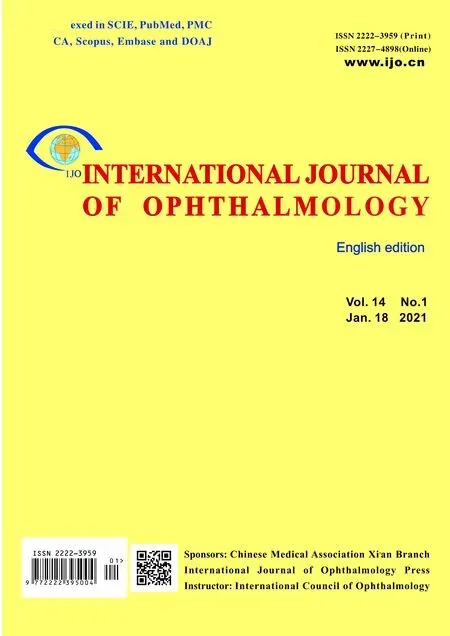Comment on “Impact of ultrasound and optical biometry on refractive outcomes of cataract surgery after penetrating keratoplasty in keratoconus”
Maddalena De Bernardo, Ferdinando Cione, Nicola Rosa
Department of Medicine, Surgery and Dentistry, “Scuola Medica Salernitana”, University of Salerno, Baronissi, Salerno 84081, Italy
Dear Editor,
We read with great interest the article by Krysiket al[1]concerning ultrasound and optical biometry after penetrating keratoplasty (PK) in keratoconus. We would like to congratulate the authors for their paper, because this is an important topic. However, we would like to make some comments on points that in our opinion should be clarified.
1) The authors utilized A-scan ultrasonic biometer with an applanation technique for axial length measurement in the group A. Unfortunately, this kind of technique has been shown to be very unreliable and should not be used, not only in clinical studies, but also in clinical practice. Immersion technique is the only ultrasound technique that should be used, in fact in some countries, the contact technique is considered to be malpractice. In case of keratoconus, where the cornea is thinner, the applanation technique could be even more unreliable[2].
2) The authors evaluated 42 eyes of 34 patients with keratoconus who had previously undergone PK, meaning that only in some patients both eyes were studied. This kind of sampling should be avoided, it should be better to evaluate one eye for patient. In case of datasets that include one eye of some subjects and two eyes of others, applying specific statistical methods such as the Bootstrap or generalized estimating equations (GEE), is mandatory to have valid results[3].
3) The amount of patients in each group is not very clear. In the table seems that all the patients have been evaluated with both ultrasound biometry (UB) and optical biometry (OB), but in the material and methods seems that in 16 eyes with dense cataract UB was utilized to calculate the IOL power. It is not clear if the reason for this was the unreliability of OB. In this case how could they compare the measurements? If it was reliable, why did they prefer the UB?
4) The authors did not specify if they use diあerent A constants for UB and OB. If they did not, they included a bias in the study that makes the comparison meaningful.
5) Figure 1 of the study shows the comparison of two Bland-Altmann graphs, but they were not represented in the same scale, which makes it diきcult for the data comparison.
6) Last sentences of the study are peculiar: Krysiket al[1]declare that surgeon’s professional experience remains crucial to choosing the correct IOL power. This declaration is contrary to the scientific method itself, which uses data obtained from experiments to test hypotheses and experts’ opinion represents the lowest step of quality of evidence[4]. In conclusion, a scientific study should never use terms such as “surgeon experience” to conclude its analysis because this would represent a complete failure of the scientific investigation.
ACKNOWLEDGEMENTS
Conflicts of Interest:De Bernardo M,None;Cione F,None;Rosa N,None.
 International Journal of Ophthalmology2021年1期
International Journal of Ophthalmology2021年1期
- International Journal of Ophthalmology的其它文章
- Instructions for Authors
- Comment on “Early results of circularity and centration of capsulotomy prepared by three diあerent methods”
- Reviewer Acknowledgements
- Endothelial keratoplasty combined with scleral fixation intraocular lens
- A direct observation of aqueous humour flow in vivo after implantable collamer lens with a central hole implantation
- Sustained-release drug delivery systems for the treatment of glaucoma
